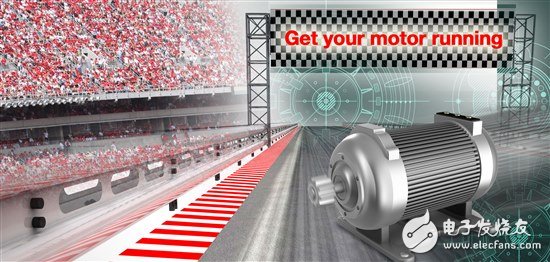
Privacy statement: Your privacy is very important to Us. Our company promises not to disclose your personal information to any external company with out your explicit permission.
During my frequent business trips, I "tested" a lot of rental cars. To be honest, until recently I was the kind of person who was willing to change the car after the wheel was gone. And I had to hand it over to the Detroit boys, and finally they came up with a way for me to buy a new car, that is, a lot of cars electrified.
Current cars have many cool electronic features, such as smartphone synchronization support, in-vehicle infotainment systems, blind spot detection, adaptive headlights, seat position memory, and active suppression of interior noise. All of these features make me wonder how I should design an integrated circuit (IC) in automotive applications.

The answer is that it must be AEC-Q100 certified. AEC, on behalf of the Automotive Electronics Council, is a subsidiary of JEDIC and is primarily responsible for setting automotive-grade equipment requirements. There are a lot of specific specifications to be met here, and although we can't explain them in detail, we can get a general idea of the meaning of Q100 certification.
The AEC-Q100 first defines five different temperature levels that are used to regulate the operating temperature range for a given device environment. For example, Class 1 is a very common standard for automotive applications and specifies that the device can operate from -40 ° C to +125 ° C (minus -40 ° F to +257 ° F) ambient temperature. In addition, device electrical specifications are usually guaranteed within this scope of work. This is not the case for some non-automotive devices, as their specifications are only guaranteed at room temperature. Looking at the DRV8801-Q1 brushed DC motor drive data sheet, you will find a note at the top of the electrical characteristics table indicating that the specification can be guaranteed over the entire Class 1 operating range.
Another important AEC-Q100 compliance requirement relates to the production validation of the device. Any IC must pass a series of electrical, service life, and reliability stress tests before entering the production phase. For automotive grade ICs, product testing is much more stringent than industrial or commercial ICs. Temperature levels are involved here, as different temperature grades have different quality requirements, with grade 0 (-40°C to +150°C) being the most stringent and suitable for applications under the drive train or under the hood. These rigorous certification tests ensure high reliability and long service life of equipment in harsh automotive environments. The Q100 application is not limited to the automotive market, as more and more industrial customers abandon standard industrial grade products and switch to Q100 certified components due to more stringent testing.

In addition, there are differences in the way in which device manufacturing and design change notifications are handled. For automotive grade devices, recertification and change notification requirements are much more stringent than industrial or commercial devices. For example, many small process variations on industrial devices do not require notification or re-certification of the device, but this is required for automotive devices.
Sometimes the AEC-Q100 specification has some acceptable exceptions, depending on the customer or application. These exceptions and a list of all verification tests performed on the device can be found in the Production Part Approval Process (PPAP) document. For example, one of the more common exceptions is ESD performance. The AEC-Q100 requires the device to withstand 2000V Human Body Discharge (HBM) mode, with a 750V powered device mode (CDM) on the corner pins and 500V on all other pins. The ESD specification can be found in the device data sheet. For example, the product manual for the 1A brushed DC motor driver DRV8832-Q1 lists the ESD specifications on the first page. The ESD specification is listed according to the AEC-Q100 classification code, as shown in the table below.

Note: The minimum specification requirements for AEC-Q100 are H1A (HBM) and C4B (CDM).
In short, there are a lot of things involved in manufacturing automotive-grade ICs. The next time you sit in a new car full of electronic devices, you can spend a minute thinking about all the engineering techniques that bring these electronic devices into our lives.
For more details on motor drives, watch my quintessential video: "How to choose between a pre-driver and an integrated motor drive" or "Understand the basics of BLDC." Feel free to ask questions in the comments section or visit the TI Motor Drive Forum or Automotive Product Forum to ask questions or share your experience.
In addition, I hope that you can visit our car blog "The Story Behind the Wheels" to learn how TI builds the future of the car.
April 01, 2024
February 27, 2023
October 21, 2024
October 21, 2024
October 21, 2024
इस आपूर्तिकर्ता को ईमेल
April 01, 2024
February 27, 2023
October 21, 2024
October 21, 2024
October 21, 2024
संपर्क करें


कॉपीराइट © सभी अधिकार सुरक्षित 2024 Dong guan Sum Wai Electronic Co,. Ltd.।

Privacy statement: Your privacy is very important to Us. Our company promises not to disclose your personal information to any external company with out your explicit permission.

Fill in more information so that we can get in touch with you faster
Privacy statement: Your privacy is very important to Us. Our company promises not to disclose your personal information to any external company with out your explicit permission.